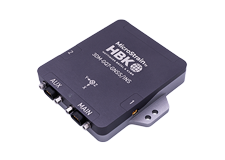- By
- Posted Friday, January 17, 2020 - 09:00
MicroStrain’s distributed rotorcraft wireless health monitoring systems provide a wealth of information about aircraft component health and usage.
Optimize Total Cost of Ownership with Wireless Monitoring
.jpg)
The operation and maintenance of rotorcraft can account for more than half of a platform’s total cost of ownership. Health and usage monitoring have been shown to reduce maintenance cost by over 15% while reducing unscheduled downtime by nearly 50%. Embedded wireless sensor networks for monitoring critical rotorcraft components provide the actionable condition information necessary to optimize the schedule and cost of maintenance practices, maximize structural life, and enhance platform safety with a lightweight, scalable system.
LORD MicroStrain’s distributed rotorcraft wireless health monitoring systems provide a wealth of information about aircraft component health and usage. Specifically, LORD’s ruggedized wireless sensors enable the autonomous reporting and tracking of pitch link strain, landing gear load, structural loads and fatigue, bearing health monitoring, swash plate temperature and vibration, drive train torque, gearbox vibration, and flight regime recognition.
Lightweight, Easy to Install/Retrofit Health Monitoring
Conventional hardwired rotorcraft sensing systems weigh over 45 Kg (100 pounds) The wiring and sensors can be difficult to install, complicate retrofits, and compromise flight performance. LORD’s wireless solution enables scalable sensing at a fraction of the weight and size while tying into the aircraft bus. In addition, LORD’s LXRS® Lossless, Extended Range, Synchronized communication protocol supports reliable data from rotating components without the need of slip-rings. Once installed, LORD’s low power wireless sensors can leverage ambient energy harvesting from strain, vibration and temperature to provide long-term monitoring without battery replacement or battery maintenance.










